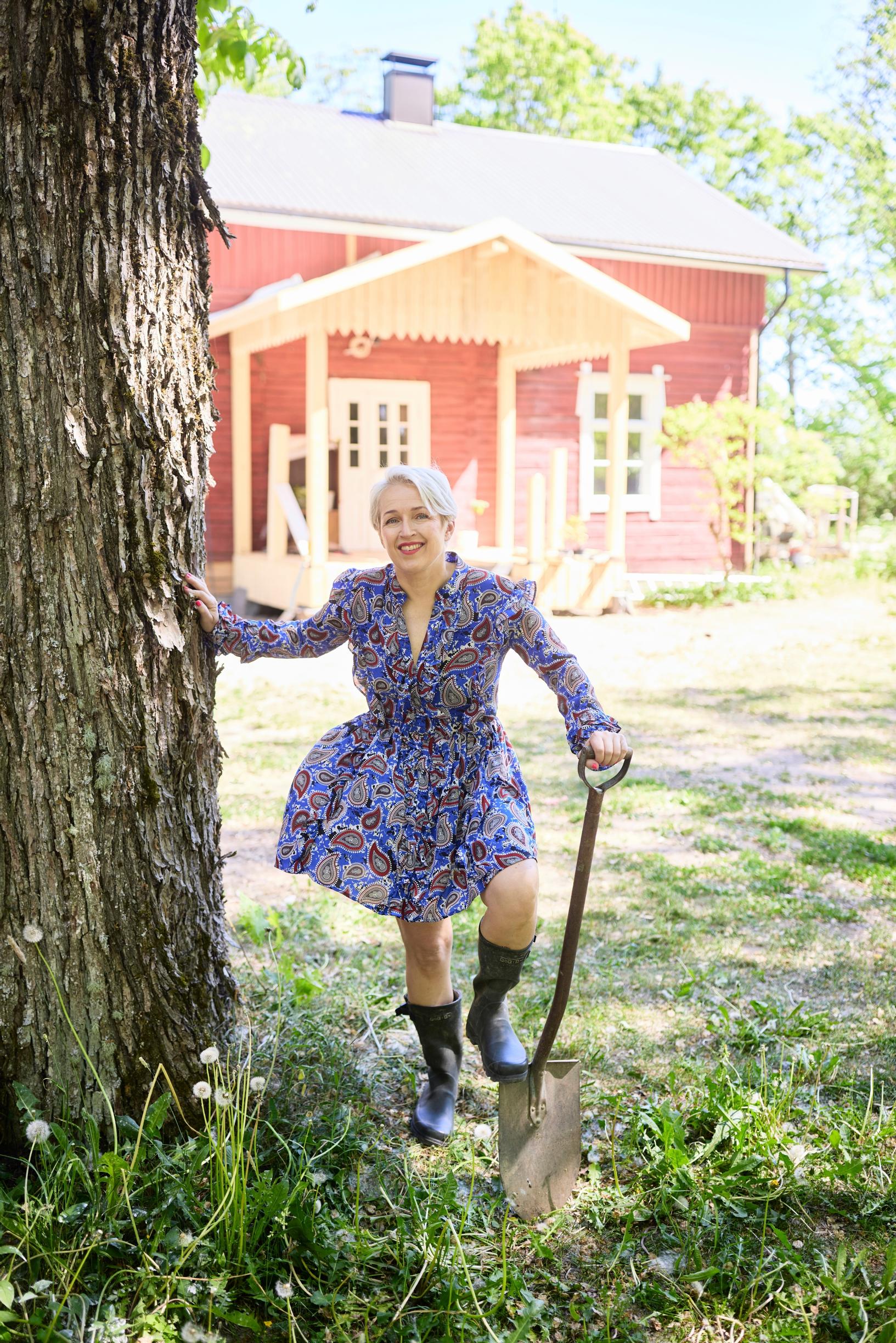
I buried old steam kettles in my garden beds—now I wait for results!
“My eyes have become much more attuned to the garden’s possibilities and proportions,” writes columnist Anna Perho.
Some seeds need a cold treatment to germinate. The same goes for some people.
Whereas last spring I felt like a stranger on Mars, this year, after a long winter of cold treatment, I can see that my confidence as a gardener has grown significantly. My eyes are now far more attuned to the garden’s possibilities and proportions: raspberry bushes here, a perennial bed there, and a little water feature right here.
If I had to name a guiding principle for all this work, it would be ’natural’: no forcing or clipping, just adapting and making use of what the garden already offers.
I started the season by picking up where I left off last fall: building raised beds. The basic idea is to create a self-renewing growing medium from leaves and other organic debris. First, I laid down a biodegradable fabric to deter weeds. Then I added branches, leaves, and soil, finishing with a layer of hay to retain moisture.
And you can also bury old steam kettles into the bed. According to the internet (what could possibly go wrong?), they double as bokashi bins: you put plant-based kitchen scraps into the kettle, pop the lid on, and the worms that move in and out through the holes transform the contents into fresh, rich soil.
Worms can move in and out through the holes in the kettle, creating new, rich soil from the contents.
Between the beds, I made wide pathways. They also have fabric at the bottom, which I covered with cardboard and bark mulch. I’m quite pleased with how they turned out: the paths look sturdy and tidy, supporting my idea of a garden with its own distinct areas. Here’s a neat kitchen garden, and over there a wild meadow.
Around it all, I plan to build a fence mostly from materials I already have: I’ll drive pairs of hay poles around the beds and stuff branches between them. The branches form a dense layer that shelters insects and supports the climbing plants I’m imagining.
For fence materials, I opened up a thick patch of lilacs and cut a pathway through the middle. I hope it creates the illusion of a gate. If not, at least I got a hefty pile of materials for my fence.
The only question left is the most exciting one: what to plant in the beds?
The only question left is the most exciting one: what should grow in these beds? Flowers? Potatoes? A pumpkin? For starters, I found a few onions and garlic bulbs sprouting in my kitchen. I parted the hay, tucked them in, and sprinkled in a bag of peas. Now I’m just eagerly waiting to see what happens.
After smoothing the hay layer back into place, I wiped my brow. Now it’s time for this spring’s warming treatment.
Watch a video of Anna’s spring tasks below or on our Instagram.
Anna Perho is a coach, journalist, and columnist who’s renovating the garden of a late-19th-century house. You can follow her project on Instagram at @olipa_kerran_talo.


